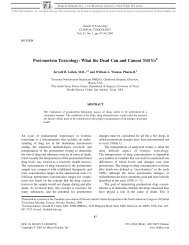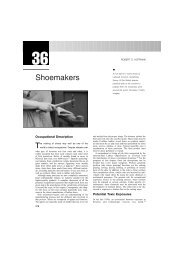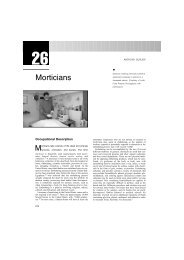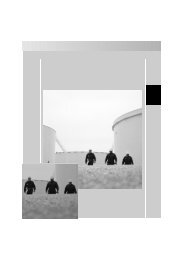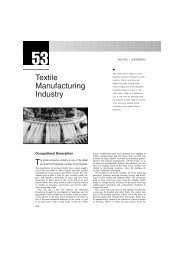9. Treatment of Amatoxin Poisoning-20 year retrospective analysis
9. Treatment of Amatoxin Poisoning-20 year retrospective analysis
9. Treatment of Amatoxin Poisoning-20 year retrospective analysis
You also want an ePaper? Increase the reach of your titles
YUMPU automatically turns print PDFs into web optimized ePapers that Google loves.
734<br />
failure cases treated by hydrocortisone confirmed that<br />
steroids improved neither hepatic function nor survival<br />
rate. [379]<br />
Although steroids were included as therapeutic agents<br />
for Amanita poisoning by Floersheim et al. in 1982, [298]<br />
he suggested removal <strong>of</strong> steroids from treatment<br />
protocols in 1985 because <strong>of</strong> lack <strong>of</strong> correlation with<br />
the outcome. [360] Despite this, in the cases published<br />
since 1980 steroids were reported in the treatment as<br />
mono-chemotherapy (8 <strong>of</strong> 1632, 0.5%, Table 3) and as<br />
bi-, tri-, and poly-chemotherapies with benzylpenicillin<br />
(443 <strong>of</strong> 1632, 27.1%, Tables 4 and 6), and without<br />
benzylpenicillin (0.5%, 8 <strong>of</strong> 1632, Tables 5 and 6).<br />
Iridoid glycosides such as aucubin and kutkin<br />
represent a group <strong>of</strong> monoterpene glycosides with a<br />
cyclopentane-(c)-pyran ring structure widely distributed<br />
in the plant kingdom. [380] Aucubin is a common iridoid<br />
glycoside isolated from Eucommia ulmoides Oliver<br />
(Magnoliaceae ), [381] Plantago asiatica L. (Plantaginaceae<br />
), [382] and Aucuba japonica Thunb. (Corna-<br />
ceae ). [383]<br />
Iridoid compounds have recently been<br />
successful in experimental amatoxin poisoning, and on<br />
the basis <strong>of</strong> the promising results, these drugs may merit<br />
clinical evaluation. Protective activities <strong>of</strong> aucubin<br />
against a-Ama have been reported in beagle dogs orally<br />
poisoned by A. virosa extract, and in mice I.P. administered<br />
with the toxin, even when the treatment was begun<br />
12 hours later. [380,382] According to these authors, the<br />
mechanism <strong>of</strong> hepatoprotection might be attenuation <strong>of</strong><br />
the continuous depression <strong>of</strong> liver m-RNA biosynthesis<br />
caused by a-Ama. [382,384] This mechanism was not<br />
confirmed in rat studies, however, aucubin enhanced<br />
excretion <strong>of</strong> a-Ama suggesting that it or one <strong>of</strong> its<br />
hydrolyzed products may displace the toxin from binding<br />
sites. [385] Oral administration is ineffective; [380,384] and<br />
the influence <strong>of</strong> the route <strong>of</strong> administration on efficacy<br />
may merit elucidation. [386] As far as we know, no<br />
investigation <strong>of</strong> aucubin in humans has been conducted.<br />
Picrosides I–III and kutkoside, known collectively as<br />
kutkin, were isolated from the roots and rhizome <strong>of</strong><br />
Picrorhiza kurroa Rogle ex Benth. (Scrophulariaceae ),<br />
an Indian plant used for the treatment <strong>of</strong> liver<br />
diseases. [387] Protective activity <strong>of</strong> kutkin was demonstrated<br />
against the hepatic damage <strong>of</strong> A. phalloides in<br />
rodent models. [388,389] Floersheim found the protective<br />
effect <strong>of</strong> kutkin comparable to that <strong>of</strong> silybin. [390]<br />
Constituents from P. kurroa have demonstrated antioxidant<br />
and anti-lipid peroxidation activity as well as<br />
effects on liver regeneration in research cited by<br />
Luper. [313] Further investigations should be carried out<br />
MARCEL DEKKER, INC. 270 MADISON AVENUE NEW YORK, NY 10016<br />
©<strong>20</strong>02 Marcel Dekker, Inc. All rights reserved. This material may not be used or reproduced in any form without the express written permission <strong>of</strong> Marcel Dekker, Inc.<br />
to assess the place <strong>of</strong> kutkin in clinical amatoxin<br />
poisoning treatment.<br />
In vitro production and cytoprotective properties <strong>of</strong><br />
polyclonal amanitin-specific antibodies were reported in<br />
1993. [391] However, Faulstich et al. [392] reported in 1998<br />
that amatoxin-specific Fab fragments or monoclonal<br />
antibodies enhanced the activity <strong>of</strong> amatoxins and that<br />
this new therapeutic strategy should not be considered.<br />
Retrospective Data on Use <strong>of</strong> Chemotherapy<br />
Enjalbert et al.<br />
Our review <strong>of</strong> chemotherapy administered to 1632<br />
amatoxin poisoned patients underscores its typical use in<br />
combination, and makes it difficult to assess the efficacy<br />
<strong>of</strong> each therapeutic agent individually. The mechanism<br />
by which b-lactam antibiotics (benzylpenicillin, ceftazidime)<br />
afford their therapeutic effect is still scientifically<br />
uncharacterized. Considerable data support the relevance<br />
<strong>of</strong> silymarin complex in amatoxin poisoning; the<br />
mechanisms <strong>of</strong> action include an antioxidant effect,<br />
anti-lipid oxidation, enhancement <strong>of</strong> detoxication, and<br />
stimulation <strong>of</strong> the hepatic regeneration. Biochemical data<br />
suggesting hepatoprotection by antioxidants support the<br />
continued consideration <strong>of</strong> free radical scavengers such<br />
as ascorbic acid, cimetidine, and NAC in the management<br />
<strong>of</strong> amatoxin intoxication. Hepatoprotective effects<br />
<strong>of</strong> iridoid glycosides (aucubin, kutkin) have also been<br />
demonstrated with in vivo animal models; these<br />
promising findings merit further investigations.<br />
In our compilation, 80.9% (1632 <strong>of</strong> <strong>20</strong>17) amatoxin<br />
poisoned patients received chemotherapy (Chem-group)<br />
with or without detoxication procedures (Tables 3–6).<br />
Drugs were given as mono-chemotherapy in 347 cases<br />
(21.3%, Table 3) and in combination in 1285 cases<br />
(78.7%, Tables 4–6) either as bi-chemotherapy (815 <strong>of</strong><br />
1632, 4<strong>9.</strong>9%) or tri-chemotherapy (280 <strong>of</strong> 1632, 17.2%)<br />
or poly-chemotherapy (190 <strong>of</strong> 1632, 11.6%). The<br />
therapeutic agents can be classified into four groups<br />
according to the frequency <strong>of</strong> their administration as<br />
single agent or chemotherapy combinations. Frequency<br />
<strong>of</strong> use ranged from 0.7 to 86.5%. The lowest frequency<strong>of</strong>-use<br />
group among the 1632 amatoxin poisoning cases<br />
is constituted by ceftazidime (0.7%), cimetidine (1.1%),<br />
and antiseptic agent (1.2%). The second group is<br />
represented by vitamin C (3.7%), antibiotics (3.8%),<br />
and NAC (11.8%). The third group consists <strong>of</strong> thioctic<br />
acid (27.1%), steroids (27.6%), and silybin (33.7%). The<br />
highest frequency-<strong>of</strong>-use group is comprised <strong>of</strong> cases<br />
treated with benzylpenicillin (1411 <strong>of</strong> 1632 patients,<br />
86.5%). Benzylpenicillin was the most frequently<br />
administered drug used alone (164 cases, 10.1%,




